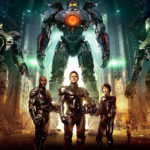 A large number of fantasy and sci-fi stories feature military characters. Sometimes it’s because a knight or space marine seems like a more exciting protagonist than a peasant or waiter at the Star Diner. Or, sometimes the peasant or waiter finds herself leading a revolt against the Empire of Evil, and now all those uniformed troops are out to get her.
A large number of fantasy and sci-fi stories feature military characters. Sometimes it’s because a knight or space marine seems like a more exciting protagonist than a peasant or waiter at the Star Diner. Or, sometimes the peasant or waiter finds herself leading a revolt against the Empire of Evil, and now all those uniformed troops are out to get her.
At certain points in history, many people in a country will have had at least one family member or friend who’s served in the armed forces, or will have served themselves. At others, some people might not have any close associates who’ve served. This is a ground ripe for misconceptions to creep in. Sometimes these misconceptions imply that military personnel are capable of incredible feats—and then imply personal fault when reality fails to live up to the mythology. And sometimes these misconceptions feed ugly falsehoods.
- “Lone wolves” do not make the ideal soldiers.
Being in the military is, to a large part, about learning to work as a team. Success or failure—and sometimes, even survival—depends on everyone doing their best and working together. “Lone wolves” might make dramatic protagonists in video games (in which the player gets to defeat all the enemies her/himself) but in real life, nobody wants to be on a team with the guy who can’t get along with anyone else, or whose tendency to ignore orders and “do his own thing” puts the rest of the team in danger.
- Militaries do not have unlimited equipment/personnel.
“We needed to evacuate the island. Why didn’t the army send more helicopters?”
The army didn’t have more helicopters to send.
“Why not??”
Well, some were stationed too far away to get there in time.
“How come?”
In case they were needed in those other places. We can’t psychically guess where helicopters might be needed at any given time.
“Why don’t we just get more helicopters then??”
Helicopters have to come from somewhere. It takes time to build them. It also takes money.
(And the same goes for pilots. You might have ten helicopters and only five available pilots who can fly them. No, you cannot swap out for a jet pilot.)
“Then why didn’t we put more people in the helicopters we did have?”
Because aircraft have weight limits, beyond which it is dangerous to fly.
The truth is that most military operations are about learning to do the most with the equipment and people you’ve got. It is never as much or as many as you would want.
If your main character is a soldier, she will have spent much of her career solving problems, often based around “we’re out of this, we’re short of those, and we can’t get you these, so what can you use instead?”
- It is not always possible to avoid casualties. Or to say no to missions that might cause casualties.
“Misconceptions About Combat” is a whole other article, but in brief: not even the best crack shot in the world can reliably “shoot the gun out of the enemy’s hand,” or otherwise render the enemy unable to harm anyone while refraining from killing them. Commanders often have difficult decisions to make when going back in search of the missing soldier means putting their entire units at risk: is it fair to ask ten people to gamble their lives for one? And what if doing so makes the unit unable to carry out their mission? If someone gets injured, do you evacuate them first, or do you carry out the mission and hope they can hold on? Leaders are regularly faced with hard choices: to presume that these choices are “easy” or imply a “lack of caring” do real-life servicepeople a true disservice.
- Most people don’t join the military “to kill people.”
I’ve been shocked and disgusted to read scenarios which were summed up, in effect, as “well, only soldiers died, so it’s okay.” The implication is that anyone who “signed up to kill” deserved to be on the receiving end. After all, why else would anyone join the military?
Patriotism is a potential reason, certainly, but a more common motiviation is opportunity. “I couldn’t find a job in my area.” “I wanted to travel/get an education/experience life and I couldn’t afford to do it on my current wages.” Or, simply, “there’s no other way to learn to fly a fighter jet.”
The military personnel I know are not looking for a legally sanctioned way to commit murder. Some of them are people who strongly believe in their country and its principles. Many of them are people who found service to be the best way (sometimes the only way) to improve their lives. Writing them as though they were criminals does a disservice to the many fine men and women in uniform across the world.
Even though fiction is make-believe, fictional portrayal of groups of people can reinforce real-world thinking. The power of fiction is that it can get readers to think about different points of view, including ideas they’d never considered before, and all while having “fun”. But cheap stereotypes can reinforce ideas borne of misinformation and ignorance. Do real-life military personnel the courtesy of reflecting their experiences in an honest way.





